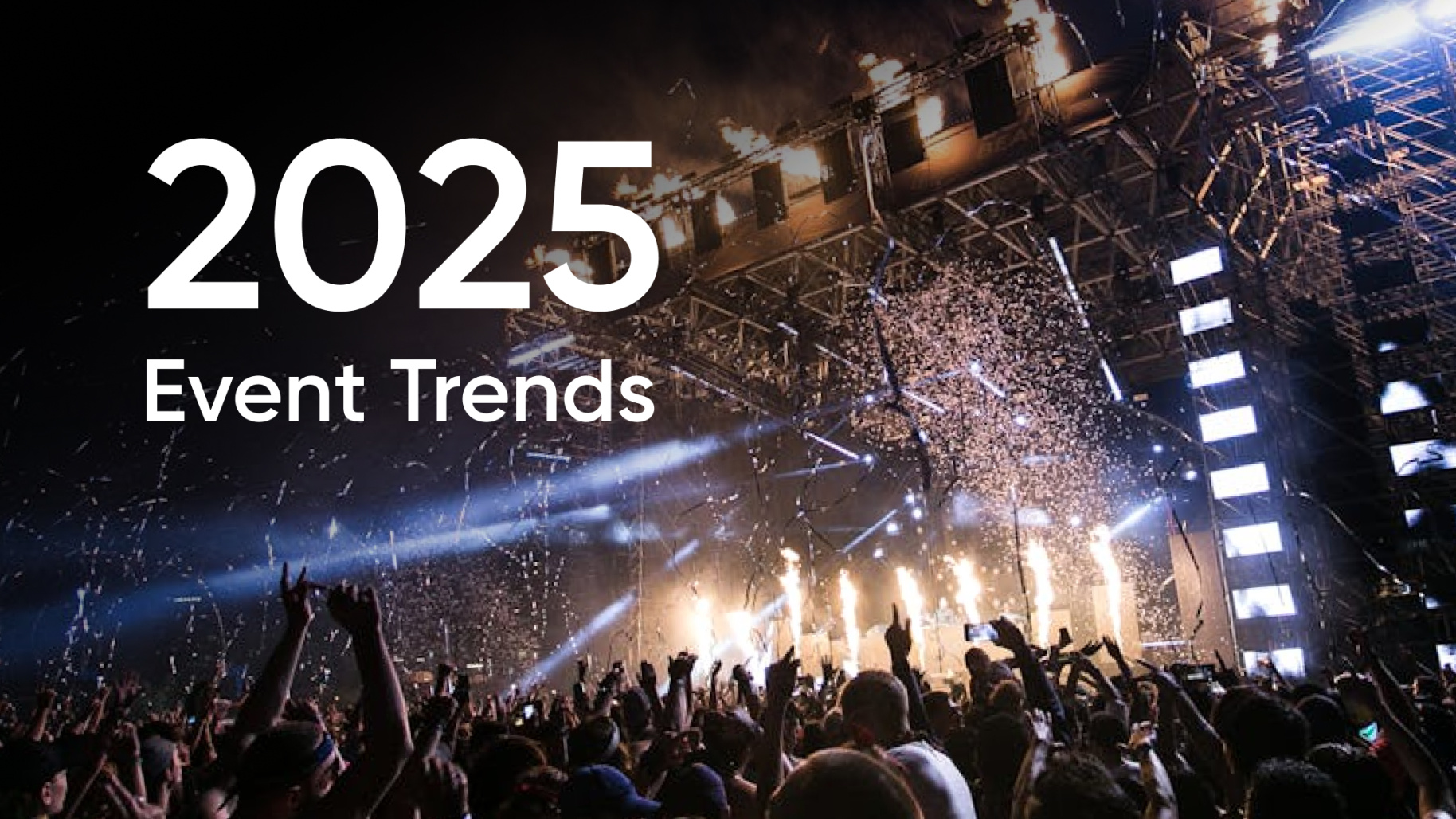Top Event Trends for 2025: Transform Your Events Like Never Before
Welcome to 2025, where the events industry is evolving faster than ever. Shifting audience expectations, technological advancements, and a focus on sustainability are redefining how events are planned and executed. Whether you're organizing a conference, music festival, or corporate retreat, staying ahead of these trends is key to creating events that leave a lasting impression.
Let’s dive into the top event trends for 2025 and how you can implement them to connect with your audience and elevate your events.
1. Direct-to-Fan Ticketing: Building Stronger Connections
In 2025, maintaining a direct line of communication with attendees is more important than ever. Events aren’t just about ticket sales—they’re about fostering relationships and converting attendees into loyal fans. By collecting feedback, engaging with your audience, and tailoring future experiences based on their preferences, you can ensure stronger connections and better outcomes.
How to implement direct-to-fan strategies:
Collect post-event feedback, not only for conferences but also after concerts, theatre productions, and festivals.
Use feedback to improve your event experiences—whether it’s adjusting content, refining schedules, or enhancing logistics.
Communicate directly with attendees through email campaigns or social media to nurture relationships.
Why it works: Direct engagement builds trust and loyalty. Fans who feel heard and valued are more likely to return, spread positive word-of-mouth, and support future events.
Pro Tip: Leverage your ticketing platform's attendee data collection features to keep the conversation going long after the event ends.
2. Data-Driven Personalization: Craft Experiences That Matter
The future of events lies in personalization. By leveraging data and analytics, event organizers can move beyond generic experiences and tailor every detail to attendees’ preferences.
Ways to personalize your events:
Curate personalized agendas for participants based on their interests.
Send tailored recommendations for sessions, speakers, or networking opportunities.
Use real-time engagement metrics to adapt on the go and enhance the overall experience.
Why it works: Personalized experiences create deeper connections and ensure attendees feel the event was built specifically for them. This fosters loyalty, boosts satisfaction, and increases return attendance.
Pro Tip: Use pre-event surveys and analytics tools to collect insights. Post-event reports can also inform future strategies and improve planning.
3. The Rise of Micro-Events: Smaller, More Impactful Gatherings
Bigger isn’t always better. In 2025, micro-events—smaller, more intimate gatherings—are gaining popularity. They focus on quality interactions, niche interests, and curated experiences.
Why micro-events are trending:
Budget-friendly and easier to manage with limited resources.
Foster stronger, more meaningful connections among attendees.
Allow for hyper-targeted, personalized content that resonates with niche audiences.
Examples:
Invite-only networking sessions.
Small workshops or focused training events.
Boutique gatherings for VIP attendees.
Pro Tip: Use social media and word-of-mouth to generate excitement around micro-events.
4. Sustainability Takes Center Stage
Eco-consciousness is no longer optional—it’s essential. Attendees are increasingly looking for events that reflect their values, making sustainability a critical focus for organizers.
Steps to create greener events:
Swap single-use plastics for biodegradable or reusable alternatives.
Partner with local vendors to minimize your carbon footprint.
Opt for digital tickets and materials to reduce paper waste.
Integrate renewable energy sources, such as solar-powered lighting or sound systems.
Why it matters: Prioritizing sustainability enhances your reputation and attracts environmentally-conscious attendees and sponsors, all while helping the planet.
Pro Tip: Highlight your eco-friendly initiatives in your marketing efforts. Let attendees know how their participation contributes to a greener future.
5. Health and Safety: A Non-Negotiable Priority
Even as pandemic concerns fade, health and safety remain key factors for attendee confidence. Visible, proactive safety measures are essential to ensuring a positive experience.
How to ensure a safe environment:
Implement contactless check-ins, registrations, and payments.
Provide sanitation stations throughout the venue.
Clearly communicate safety measures, such as crowd control, ventilation, and cleanliness protocols.
Why it works: Attendees are more likely to participate in events where they feel safe and cared for. These measures demonstrate that you prioritize their well-being.
Pro Tip: Incorporate visible health and safety protocols into your pre-event marketing to reassure attendees before they commit.
6. Accessibility and Inclusivity: Events for Everyone
Designing inclusive events is not only the right thing to do—it’s essential for maximizing your reach and impact. True inclusivity means considering the needs of all attendees.
Ways to ensure accessibility:
Offer multi-language options for diverse audiences.
Ensure venues are wheelchair-friendly and accommodate all mobility needs.
Provide sensory-friendly spaces, such as quiet zones or noise-canceling headphones.
Why it matters: Inclusive events attract broader audiences and foster positive, welcoming environments where everyone feels valued and included.
Pro Tip: Consult with accessibility experts to identify barriers and ensure your event is welcoming to all participants.
7. Hybrid Events: The Best of Both Worlds
Hybrid events, which combine in-person and virtual elements, are now a staple of modern event planning. They offer unmatched flexibility, inclusivity, and scalability for organizers and participants alike.
Why hybrid works:
Broaden your reach by catering to both local and global attendees.
Reduce logistical costs associated with large physical gatherings.
Enhance engagement through live Q&A, polls, and networking opportunities for virtual participants.
Pro Tip: Use reliable live-streaming platforms with interactive features to engage virtual attendees.
Final Thoughts: Why These Trends Matter
The events industry is evolving, and staying ahead of the curve is critical to creating experiences that captivate, connect, and inspire. By fostering direct relationships with attendees, leveraging data-driven personalization, prioritizing sustainability, and embracing inclusivity, you can position your events for success in 2025.
But don’t just follow trends—set them. Innovate, experiment, and push boundaries to create events that stand out.
Ready to Transform Your Events?
With Fienta, you have everything you need to bring these trends to life. From seamless ticketing to attendee management, we’re here to help you deliver events that make an impact.
